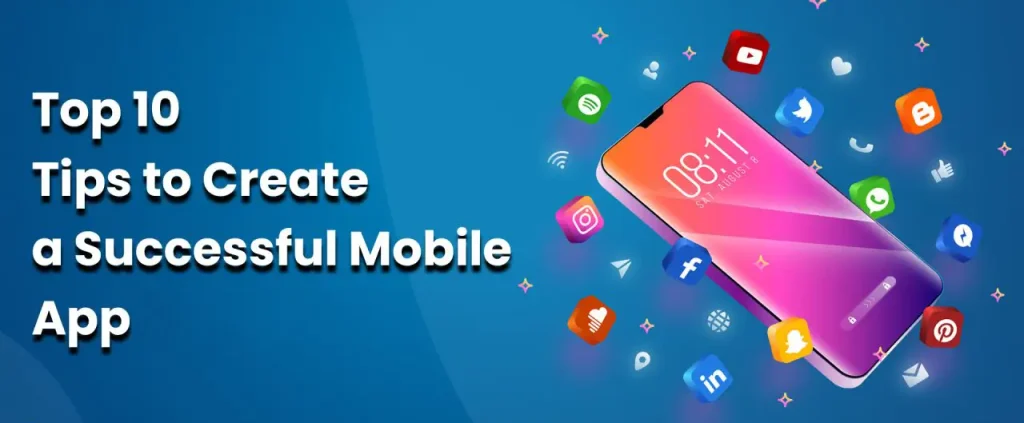
Introduction:
In today’s digital landscape, mobile app development has become an essential component of business success. With the growing usage of smartphones and tablets, companies that leverage mobile apps can enhance user engagement, streamline services, and drive business growth. However, the process of developing a mobile app comes with its own challenges. To ensure the success of your mobile app project, it is important to follow best practices that lead to a robust, scalable, and user-friendly application. Below, we provide the 10 Key Insights for Mastering Mobile App Development that will help you navigate this complex process effectively.
Here are the 10 Key Insights for Mastering Mobile App Development:
1. Clearly Define the Purpose of Your App:
Before embarking on mobile app development, it is essential to have a clear understanding of what you want your app to achieve. Start by answering questions like:
- What problem will the app solve for users?
- Who is your target audience?
- What are the core features and functionalities you need to include?
2. Conduct Thorough Market Research:
A successful mobile app needs to stand out from the competition. “To reach this goal, thorough market analysis is crucial. This research should involve analyzing:
- Analyze rival applications to uncover their advantages and shortcomings.
- Customer preferences and feedback.
- Market trends and technology advancements.
3. Choose the Right Platform:
Deciding whether to develop your app for iOS, Android, or both is one of the most critical decisions in the mobile app development process. While iOS and Android are the dominant platforms, each has unique characteristics and audiences. Consider the following factors when making your decision:
- Target audience: Analyze which platform your target users prefer.
- Development cost and time: iOS apps are often quicker to develop due to the standardized environment, while Android apps require more customization due to the variety of devices.
- Revenue model: Historically, iOS users are more likely to make in-app purchases, while Android users tend to prefer ad-supported apps.
4. Prioritize User Experience (UX) Design:
User experience (UX) design is a cornerstone of any successful app. A visually appealing app with an intuitive interface is more likely to retain users. To craft an effortless user experience, you must:
- Ensure easy navigation with minimal taps to achieve tasks.
- Implement fast loading times and minimal downtime.
- Create flexible layouts that adjust seamlessly to various screen sizes and devices.
5. Focus on Performance and Speed Optimization:
A slow or poorly performing app will quickly lose users, no matter how innovative or useful it is. Performance optimization should be a priority throughout the development process. To enhance performance, consider the following:
- Optimize code to minimize load times.
- Compress images and multimedia files.
- Test your app on different devices to ensure smooth functionality across the board.
6. Develop a Minimum Viable Product (MVP):
Instead of building a fully-fledged app with all the features you envision, it’s often more efficient to start with a minimum viable product (MVP). An MVP includes only the core features necessary for the app to function, allowing you to:
- Test the app in the real world.
- Gather user feedback on the app’s features and performance.
- Identify any pain points before investing more time and resources into additional features.
7. Ensure Robust Security Measures:
Mobile app security is critical, especially in an era where data breaches and cyberattacks are prevalent. Users expect their personal information and data to be protected when using your app. To safeguard your app from vulnerabilities, implement the following security best practices:
- Encrypt sensitive data.
- Use two-factor authentication (2FA) to enhance security for user accounts.
- Regularly update your app with security patches and improvements.
8. Test Rigorously Before Launch:
Before your app goes live, comprehensive testing is a must. Testing should cover multiple aspects, including:
Beta testing can also be an effective way to get feedback from a limited audience, allowing you to identify bugs or issues that you might have missed during internal testing.
9. Plan for Regular Updates and Maintenance:
The mobile app development process does not end once the app is launched. To stay relevant and competitive, you need to plan for ongoing updates and maintenance. Regular updates help:
- Address bugs and performance issues.
- Incorporate user feedback to improve features.
- Stay current with the latest operating system updates and technologies.
10. Market Your App Effectively:
No matter how well-designed and functional your app is, it won’t succeed without proper marketing. Develop a comprehensive marketing strategy that includes:
- App Store Optimization (ASO): Ensure your app is discoverable by using relevant keywords in your app’s title, description, and metadata.
- Social media promotion: Leverage social media platforms to create buzz and build an audience.
- Influencer partnerships: Collaborate with influencers in your industry to promote your app.
- Paid advertising: Invest in paid campaigns to increase visibility on platforms like Google and Facebook.
Conclusion:
By following these 10 Key Insights for Mastering Mobile App Development, you can increase the likelihood of creating an app that not only functions well but also stands out in a competitive marketplace. From defining your app’s purpose to ensuring ongoing updates and effective marketing, each step is crucial to achieving long-term success.
